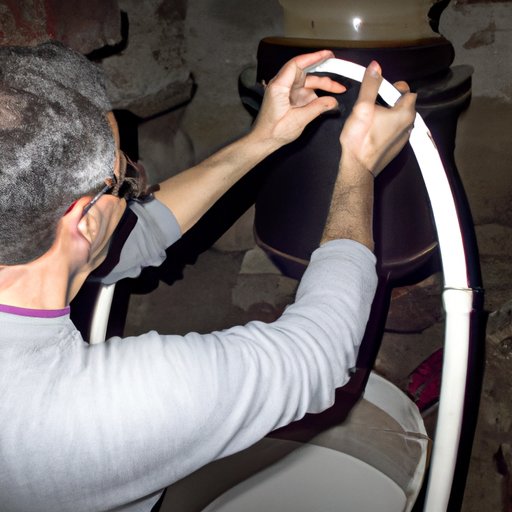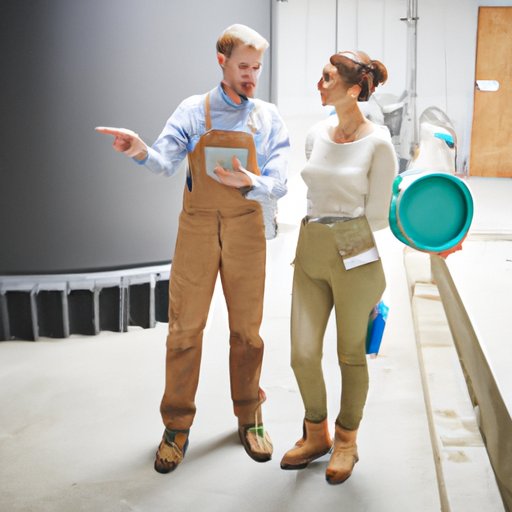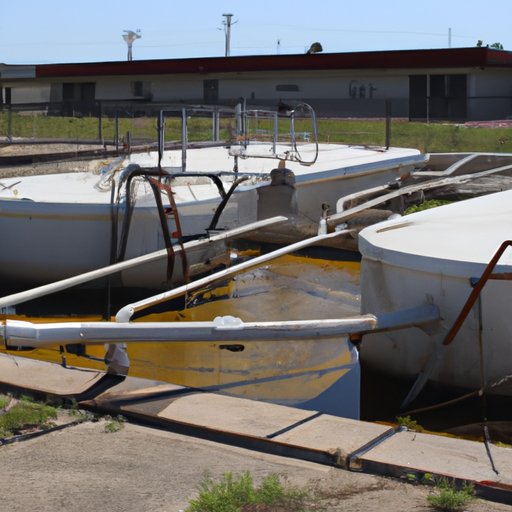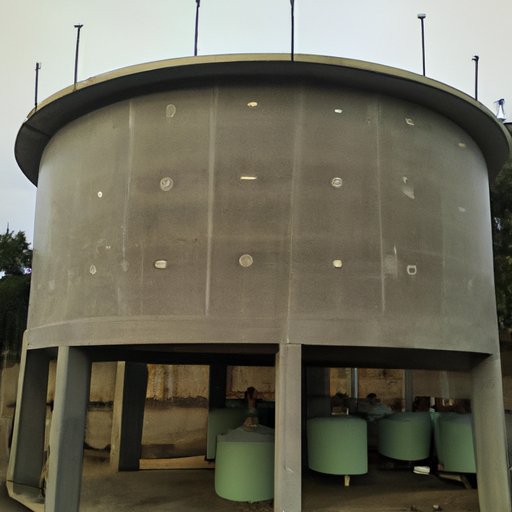Introduction
A cistern is a structure for storing water, typically outdoors and underground. Cisterns are commonly used to collect rainwater from rooftops and other surfaces and store it for later use. They can also be filled with treated water from a well or other source. In this article, we’ll explore the basics of how a cistern works, examine the components that make up a cistern, discuss the process of filling and draining a cistern, and explore the benefits and drawbacks of using a cistern.
Explaining the Basics of How a Cistern Works
Cisterns are designed to capture and store water for later use. This can include rainwater that falls on rooftops, driveways, and other surfaces, as well as treated water from a well or other source. The captured water is stored in the cistern until it is needed.
There are several types of cisterns, including above-ground models and buried models. Above-ground cisterns are usually made of plastic, metal, or concrete and are placed in an open area such as a yard or garden. Buried cisterns are usually made of concrete, fiberglass, or polyethylene and are built underground.

Examining the Components that Make Up a Cistern
Cisterns are composed of several different parts that help them function properly. These include a roof or cover, a gutter system, a filter, a storage tank, and a drain.
The roof or cover of a cistern is designed to capture rainwater and direct it into the gutter system. The gutter system funnels the water into the filter, which removes debris and other contaminants from the water before it enters the storage tank.
The storage tank is where the water is stored. It is usually made of concrete, fiberglass, or polyethylene and is designed to be airtight and waterproof. Once the water is in the storage tank, it is ready for use.
The drain is the final component of a cistern. It is used to release water from the storage tank when it is needed.
Describing the Process of Filling and Draining a Cistern
Filling a cistern is a relatively simple process. Rainwater is collected by the roof or cover and directed into the gutter system. From there, it passes through the filter and into the storage tank. Depending on the size of the cistern, it can take anywhere from a few hours to a few days to fill.
Draining a cistern is also a straightforward process. Water is released from the storage tank via the drain and can be used for various purposes such as watering plants, washing dishes, or even drinking. Depending on the size of the cistern, it can take anywhere from a few minutes to a few hours to empty.

Discussing the Advantages and Disadvantages of Using a Cistern
Using a cistern has both advantages and disadvantages. On the plus side, cisterns can provide a reliable source of water during times of drought or other emergencies. They can also save money on water bills since rainwater is free. Additionally, cisterns can help reduce the amount of runoff that enters storm drains and rivers, which can help improve water quality.
On the downside, cisterns require regular maintenance and can be expensive to install. Additionally, they may not always provide enough water to meet demand if there is a long period without rain. Finally, cisterns can be difficult to access during times of flooding, making it difficult to monitor water levels.

Exploring Potential Maintenance Issues with Cisterns
Cisterns require regular maintenance in order to function properly. Common problems include clogged gutters, broken filters, and cracked or leaky storage tanks. To avoid these issues, it’s important to inspect the cistern regularly and clean or repair any damaged components. Additionally, it is important to watch for signs of leaks and to regularly check the water level in the cistern to ensure it is full.
Conclusion
In conclusion, cisterns are a useful way to store water for later use. They can provide a reliable source of water during times of drought or other emergencies and can save money on water bills. However, they require regular maintenance and can be expensive to install. Additionally, they may not always provide enough water to meet demand if there is a long period without rain. It is important to regularly inspect and maintain cisterns in order to ensure they are functioning properly.
Overall, cisterns can be a great way to store and use water. With proper maintenance, they can provide a reliable source of water for many years to come.
(Note: Is this article not meeting your expectations? Do you have knowledge or insights to share? Unlock new opportunities and expand your reach by joining our authors team. Click Registration to join us and share your expertise with our readers.)
